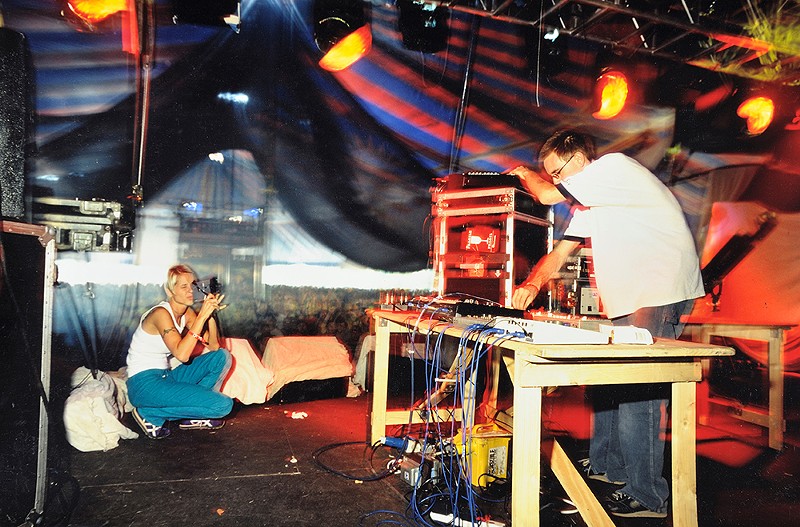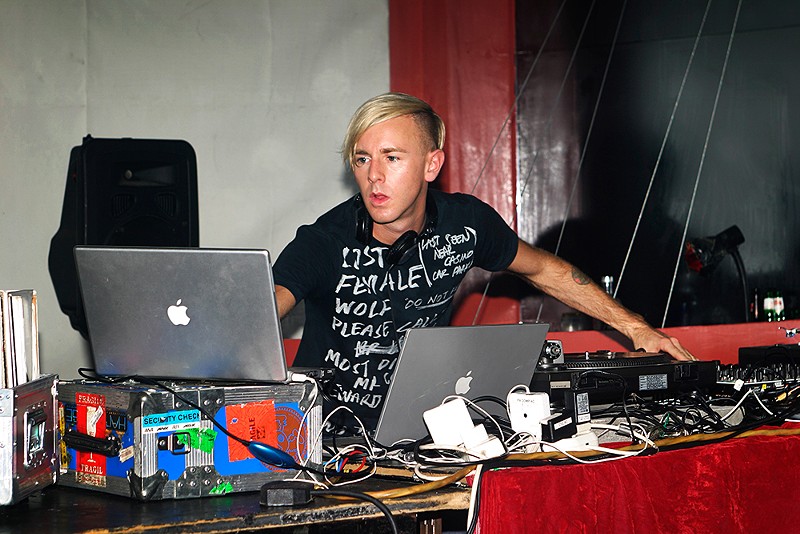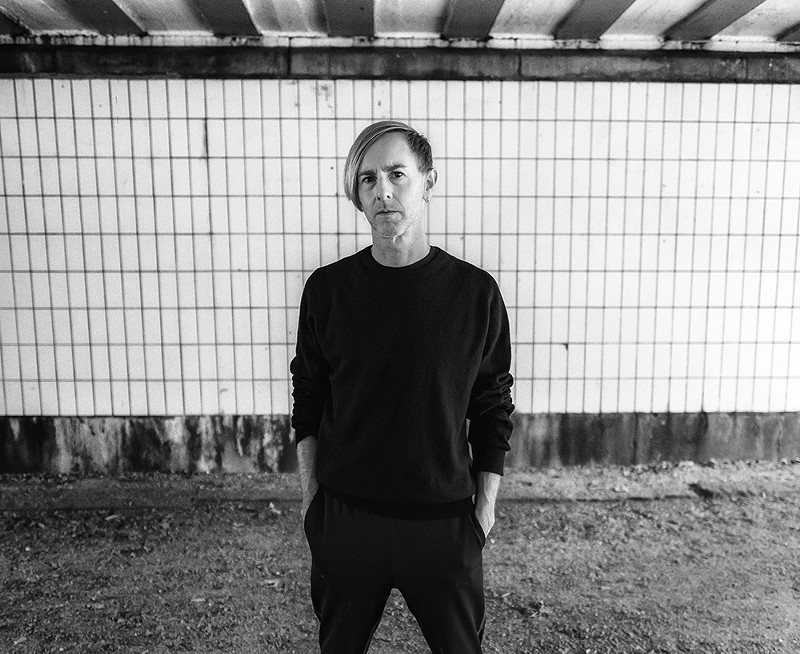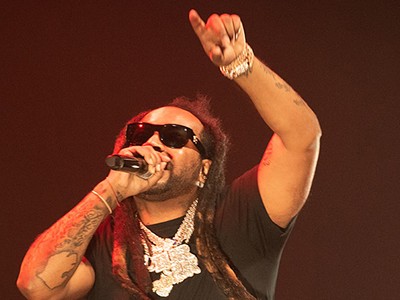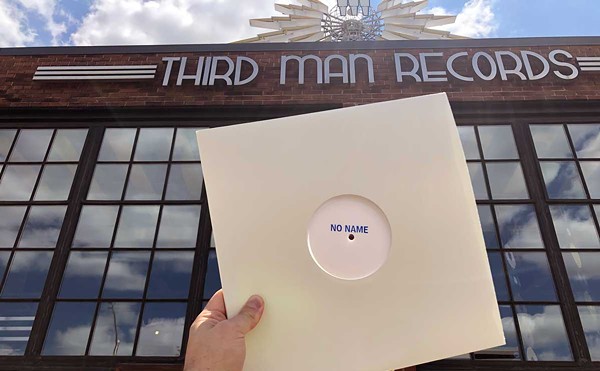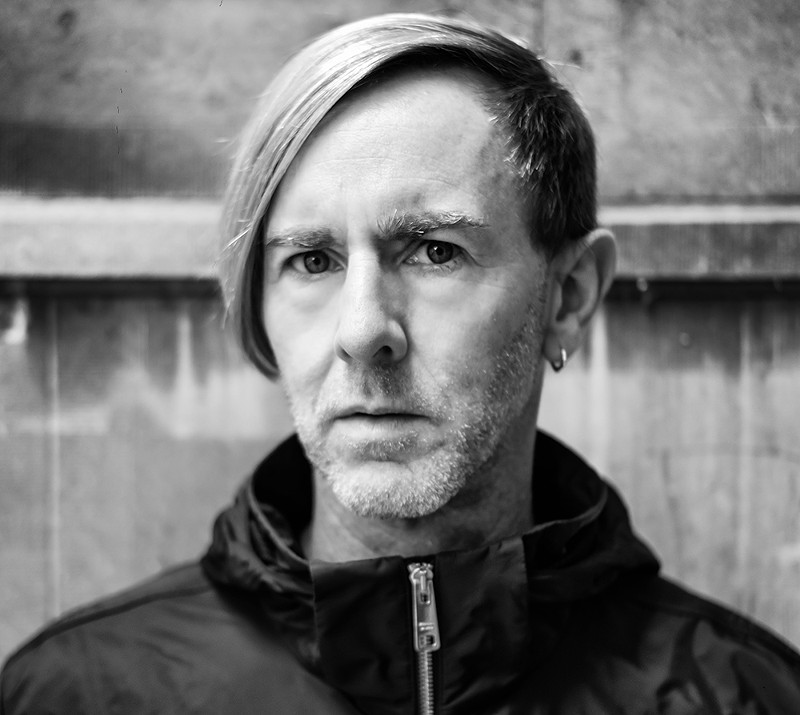
Few dance-music DJs or producers have been so concerned with the historical telling and ongoing narrative of techno music as Richie Hawtin. Certainly, his own legacy has been tied up in that story. Hawtin’s work making and spinning tracks alike — as well as putting on parties and performing live — has earned him a substantial place in the firmament. For many, his most enduring legacy is for throwing events — from ravers who went to Hawtin’s notorious Detroit parties of the mid-’90s, where he’d wrap entire rooms in black plastic (a fire hazard that could, and should, never happen today), to the young artists who went to his CNTRL Tour a decade back, featuring panel discussions on the history of techno.
His CV is impeccable: Hawtin’s work as Plastikman, as well as the head of the labels Plus 8 and M_nus, were at the leading edge of techno during the ’90s and 2000s. He’s always been dynamic on the decks: Hawtin’s own SoundCloud page teems with killer DJ sets from every vintage, including official CD releases such as the classic Decks, EFX & 909 (1999) and DE9: Close to the Edit (2001), as well as numerous live tapes, from Power 96, Detroit, from November 1989, to Flavor, Denver, from April 1994, on up to a pair of live sets from 2021.
A father of two — one is 15 years old, the other 18 months — Hawtin has also parlayed his wide and genuinely diverse set of interests into ancillary businesses. He has invested in sake, created music for Prada, and co-designed Model 1, a pro-grade DJ mixer that was recently manufactured in a more compact and affordable model for the wider market. Hawtin prizes “having long discussions about creative process” with people in all fields: “I’m inquisitive, and I love exploring,” he explains over the phone to our Metro Times correspondent from his home in Madrid. “All those projects came from the creative space more than the commercial or economic space.”
METRO TIMES: You last toured the U.S. properly in 2019. Does coming out of lockdown play a part in your decision to launch this tour?
RICHIE HAWTIN: Yes and no. I think the lockdown helped accelerate the exposure of a lot of young techno artists, or maybe just artists across the board, because there was a lot of streaming happening. And actually, with some of the younger artists, the streaming was allowing making new connections, and also time for working in the studio and honing their craft. They jumped out of COVID with a new degree of momentum — so that’s part of it.
But honestly, this tour goes back nearly 10 years to the EDM explosion in America and 2010, ’11, ’12, ’13. I was playing places like [Electric Daisy Carnival] and some of the real big commercial electronic music festivals. I was doing that in the hope that we would reach some new kids out there: Maybe a fan of EDM would accidentally stumble across techno and hear something different.
Around that time, we also did the CNTRL tours, trying to reach a little bit more of the American next generation. There’s been a 10-year gap, and then COVID. Something really feels like it’s changing now. There’s this new generation that’s been percolating this last decade that’s ready to come out and push this music into a new direction, or just to develop it, or to show their own talent. That was really the beginning of the idea to do this type of tour.
I remember seeing you in 2015 — a daytime speaking tour with panels, a primer for the kids. That’s not the kind of tour that this is, but I’m curious what you see as the commonalities between that tour and this one.
We did do events on that tour. But you’re right: There was a lot of panels and discussion. It was trying to reach out to kids out there who’d maybe heard of techno and were curious. The panels gave it a way for kids to come, who perhaps were in school, who didn’t want to go out partying [into] late night, and brought it up to a broader market. One of the women on this tour, Lindsey Herbert, was at one of those talks back then, and is now on this tour. So, I definitely see a correlation and a connection to what we were trying to do then, and some of what’s happened now.
In very basic terms, one of the most exciting things for me in my 30-year career has been always finding a good, strong connection to young DJs and producers who can learn from me and [are] inspired by me, but also vice-versa — inspire and re-energize me. That happened in the early days of Plus 8, when we had a whole collection of new young producers — we were all young producers. Then it happened again during the M_nus era in the 2000s with Magda and Troy Pierce. And then we were doing that on the CNTRL tour to reach out. And this is, again, another moment where you feel, or at least I feel, new people coming into the scene every week — but right now it feels like there’s a big generation shift.
I feel like I’m going into a new phase of my career, being into it now over 30 years. It just feels important for me to help nurture and again, just get that energy back and forth between kids who are learning and understanding and hearing techno in a very pure, first-time way, and share that commonality, that love of electronic music.
Right now, I hear a lot about how techno is becoming more commercial. It might just be because I live in St. Paul rather than a bigger city: I go to a lot of parties here, but I don’t encounter techno very much outside of when I go to see it. Where are you seeing this happening most visibly?
If you use the word techno, it conjures a huge spectrum of music; so we use the word techno loosely. It is very above-ground or at least recognized by people all over the world. In Europe, and also in the Instagram generation, you can feel a real huge interest in techno that has catchy hooks, that samples old records, that has trance — as in ’90s trance — melodic hooks and phrases.
I think we’ve spent the last 30 years — we as in the whole collective — making music that has slowly permeated just normal culture. Everyone uses technology in the studio now, so the sounds of techno are much more common in the records you hear on the radio. So it may not necessarily be that techno in general is more commercial — it’s the sound and the path behind it that’s more readily available, more often. Those futuristic electronic sounds are closer to the ears of regular people.
Leaving your own work aside, where do you see techno the genre right now?
Techno the genre — it’s an interesting topic, because it’s really the first time that I remember there was such a huge hype about the early days of techno. There’s a whole breed of techno that is nearly regurgitating what happened in the nineties, merely sometimes rebuilding some of those great records, and ending up with a new audience. It’s scary sometimes, because techno with its futuristic ethos starts to kind of crumble apart when you start creating records that sound like the past.
But I think that’s also part of it. Techno was so new and fresh back then. I don’t know if it can be that new and fresh forever, because it’s an art form now. There’s papers and stories and even academic courses to learn about making beats in techno now. But we’re in a different place. Sometimes I stand on one level, scratching my head, saying, “Hey, they made this record 40 years ago.” And then on the other side, I’m thinking, “Wow, this is exciting. It’s a brand-new record.” So that’s kind of where we’re at. Some people are happy to look back and reappropriate, and there’s other people who are looking forward and trying to find a way to make techno fresh and exciting. As people who know me [are aware], I’ve always been into a very minimalistic, rhythmic, drum, bass line-driven type of very subtractive very, very few vocals, really hypnotic — that’s probably the word I’m looking for.
This tour is while that commercial side is happening. While this ’90s resurgence is happening, this tour takes some inspiration from then, because we go back into the warehouse, really raw, really dark. But it looks and brings together artists that I think are surging ahead with that kind of minimal, hypnotic style that I’ve been part of, or Jeff Mills has been part of, Robert Hood has part of, and taking it into their own place. And importantly for me, because I come from the North American region, and they’re connected to Detroit, bringing together North American artists to see what their interpretation is going forward.
Well, you’ve always been historically aware, and you’ve always made a point of at least attempting to make your audience historically aware. What you’re describing, though, makes that sound like a double-edged sword. Is it at times?
It is, because nobody wants to be preached to about “back in the day” and all this. If I say the word[s] “back in the day,” I start to roll my eyes. But it is important to let people know that there’s a greater history of this music now than two or five, even 10 years. There’s 30 years of modern techno, and then when you go back to the earlier records, to Juan [Atkins]’s pivotal records, it’s another 10 years. And if you go back to Kraftwerk and people like that, it’s 40 or 50 years.
So, how do you bring all that together, when you’re always trying to look ahead and make new music? One way for me to do it is a tour like this, and hang out with a new generation and listen to them play, listen to them talk, have conversation, share ideas, share history, share aspirations, and hope that that kind of energy shared between us goes further than all of us, and gets shared on the dance floor and gets shared as these new artists go on to their own careers.
Now, those discussions you’re talking about — are those happening behind the scenes on this tour? Are we going to experience some of that as an audience as well?
On this tour, there’s no kind of discourse publicly. It’s just us hanging out and chatting and spending some time together, whether that’s in airports or restaurants or hotels or soundchecks. But I think those discussions and that kind of hangtime will be heard and felt in the sets that we all play together during the tour, and, I think, after the tour.
You’re talking about warehouses. Obviously, you aren’t going to get away with covering everything in black plastic the way you once did.
[laughs] Yeah.
I don’t know if you want to give anything away, but what can you do that is equivalent to that now?
I think most people are used to going into clubs or festivals, or watching festivals live, like Tomorrowland or something on YouTube. Everything is so overproduced. It’s so much eye candy. Really, festivals now cater the eye more than the ears sometimes. To go against that and go back to the warehouse, actually, all we need to do is strip everything back to the basics: a great dark warehouse, some cool, simple lights, and a great PA system and good artists. I think that’s the best recipe for a great evening out to listen to pure techno music.
I’ve always been full of contrasts. Of course, I love highly produced events. I’m one of the ones who went out there in the 2010s with Plastikman live, with visuals and a whole stage presence to underground techno. I think that there’s a need and a place for that. But because over the last 10 or 15 years, we’ve become so much more visually seduced, I think it’s really important right now to remind people that we should be sonically seduced first.
I still remember the beautiful moments of the Music Institute in Detroit or over at the Packard [Plant]. You eventually forgot whether your eyes were open or closed, because it was so dark. And you were just pummeled by great music. That’s probably at the heart of what we’re trying to achieve on this tour.
“All we need to do is strip everything back to the basics: a great dark warehouse, some cool, simple lights, and a great PA system and good artists.”
tweet this
Literally my next question was about the Music Institute. That seems to me as, maybe not the only model for black box, minimal lighting, loud music — maybe not the only one like that. But I know that was a very important club for you in that way.
Also, actually, you can start talking about the Power House in Chicago, and other places which I didn’t actually get to go to. But I was at the Institute. I used to love going to Heaven, with Ken Collier. They were just black boxes which celebrated music.
I think we’re in a very scary place where the eye discerns what is good sonically. That’s what’s happening for so many industries, especially the music industry, with our main communication avenues in places like Facebook and Instagram and TikTok. It’s really important to try and use those channels and use the way we communicate to reach out to people, but then bring them back to a place where they’re really forced to focus only on music.
In your experience, do you think that that’s going to be a giant leap for a lot of younger people? Is that totally inimical to their experience?
The tour is small, and the capacity is small, so it won’t be a giant amount of people we reach. But I do feel we have a great opportunity to give the visitors to our shows a real unique and new experience.
You mentioned that these are small capacity places. About what size are we talking about in Detroit?
I believe Detroit … let’s say, over the tour … you know, it’s good to have some mystery. The whole tour’s capacity is, there are shows of 400, and the top is about 1,000, so usually 600-800 is the capacity. And that’s it.
We’ve been talking about doing a warehouse ever since we did CNTRL. We wanted to actually do a CNTRL warehouse tour after that one. We could just never pull it together. We couldn’t find the warehouses. We couldn’t find the promoters. The scene in North America didn’t seem ready. And let me say, there was things going on like that, but [they] perhaps weren’t organized enough for us to come through on a tour. They were too short-notice.
Last year, I was able to, with the gang that I’m on tour with now, do a show in Houston at a warehouse for about 300 people. It really brought me back to those times — and back to that contrast of looking back to the ’90s and [also] looking forward. It was like in the ’90s at a warehouse party, but all the kids there were our age where we were in the ’90s. And they weren’t all there for techno. They were there because they were outcasts. They didn’t fit into the normal concert that was going on that night. They didn’t want to go to the local bar to pick up someone to take home. They were at this dingy warehouse, hearing crazy loud music. And I was like, “Wow, it’s happening again.”
That’s the exciting thing, of seeing this 30-year loop. These kids were just excited about doing something different. That was really kind of the puzzle: OK, I think it’s time to do that. That’s when we actually started talking to the gang who helps us to put tours together. They have a network of like-minded young promoters and other DJs around North America; together, they all put this together to bring the next generation to the old generation and share techno music.
The Paxahau Presents: From Our Minds — To Be Announced 2023 Tour will be held in an undisclosed warehouse location starting at 9 p.m. on Friday, March 10 with Barbosa b2b Jay York, Decoder, Huey Mnemonic, Lindsey Herbert, and Richie Hawtin.
Coming soon: Metro Times Daily newsletter. We’ll send you a handful of interesting Detroit stories every morning. Subscribe now to not miss a thing.
Follow us: Google News | NewsBreak | Reddit | Instagram | Facebook | Twitter

